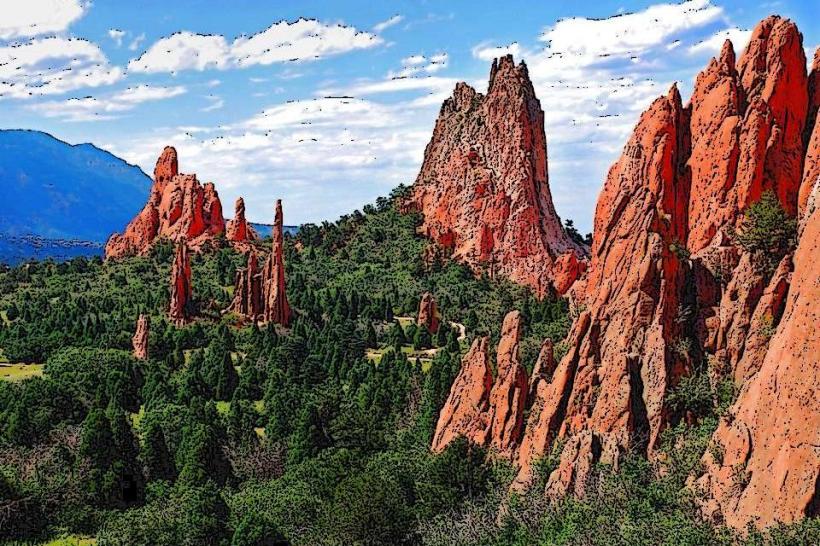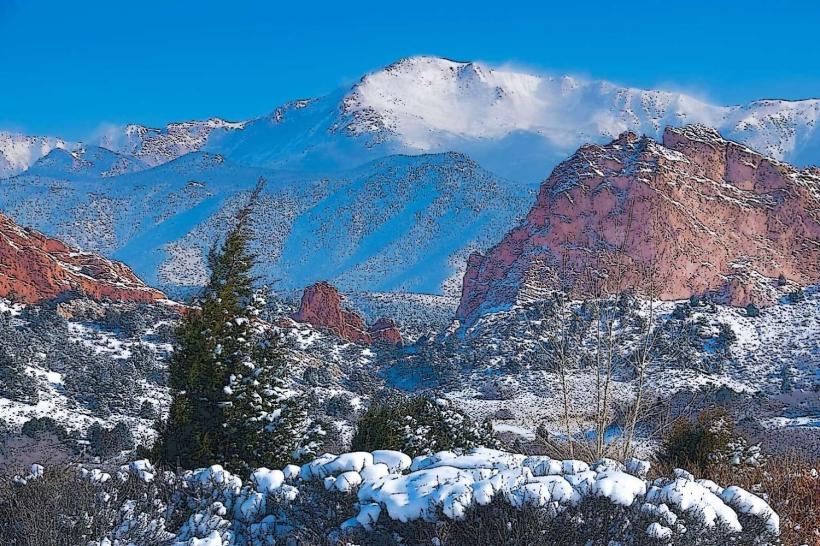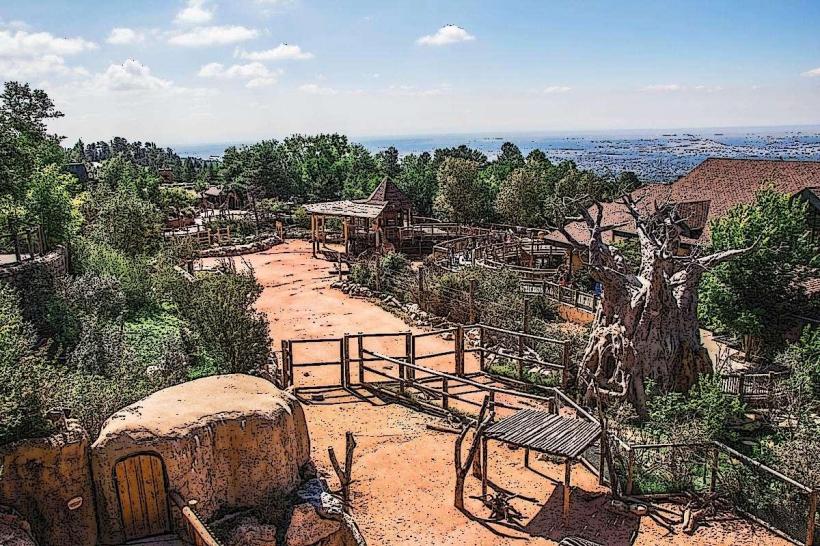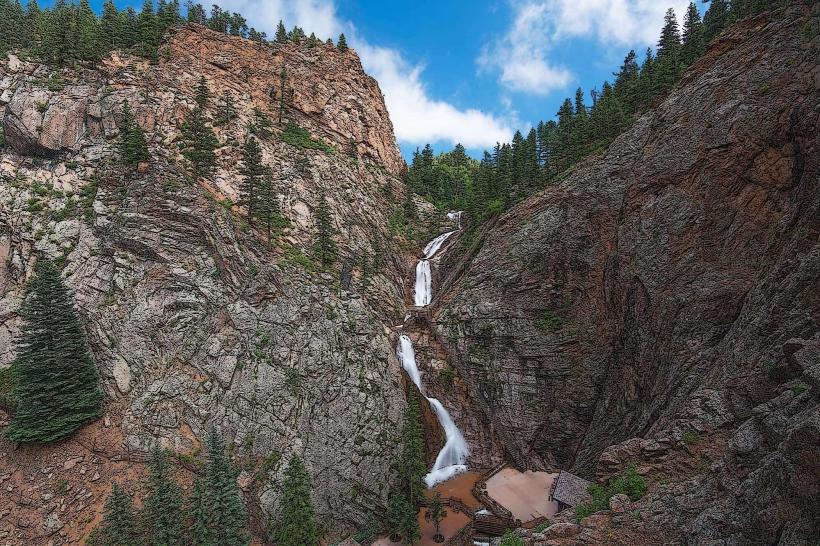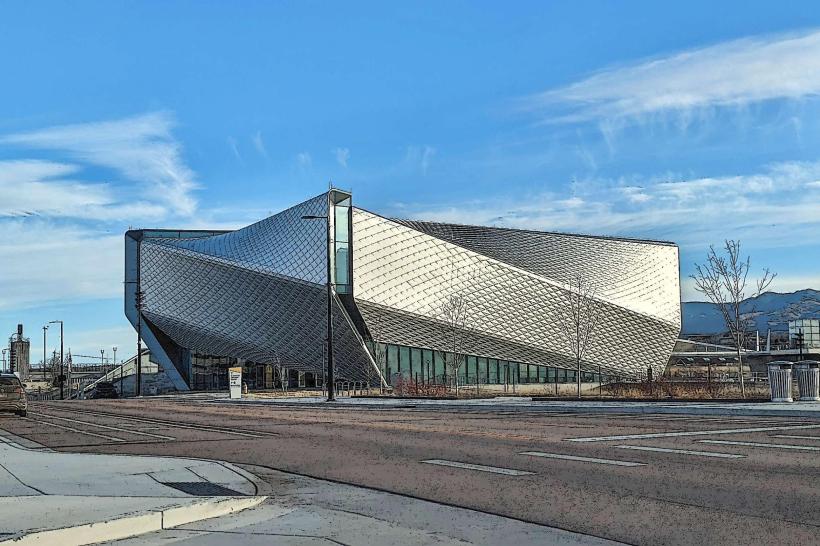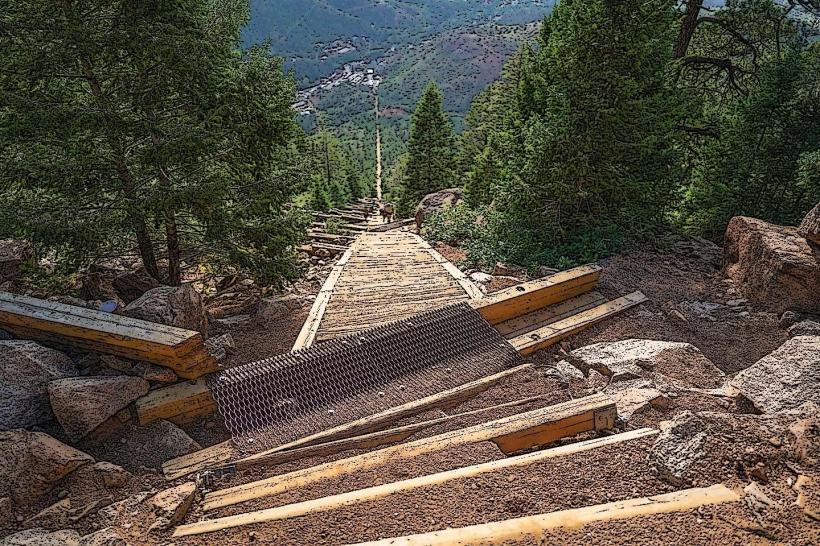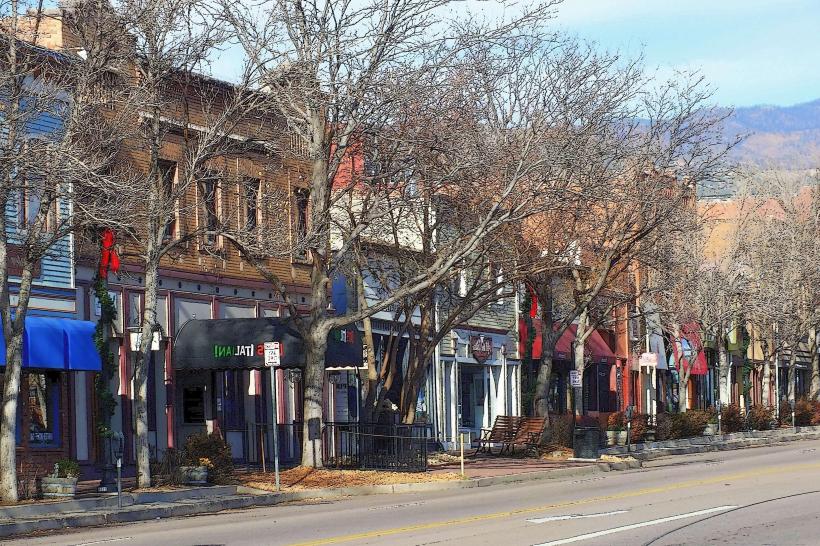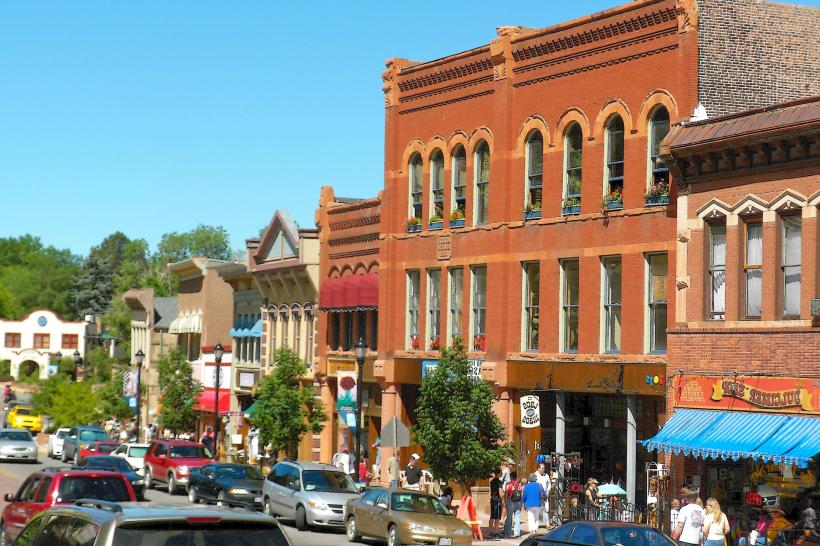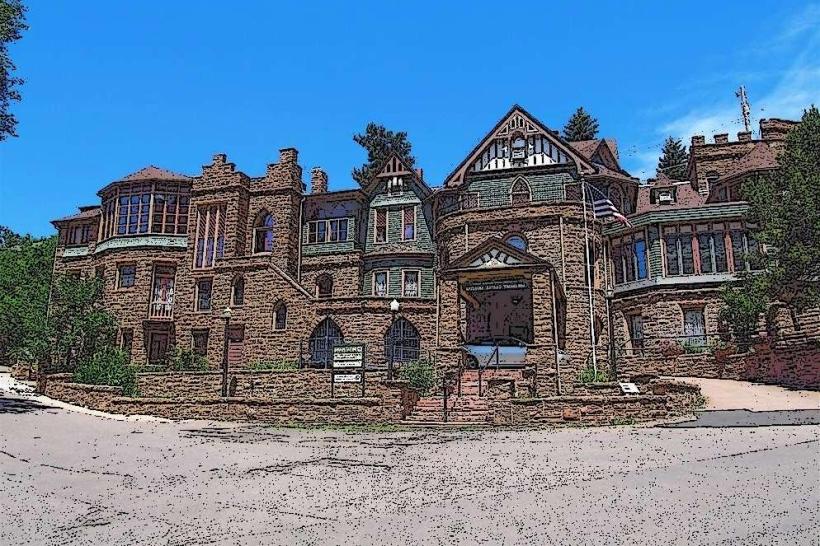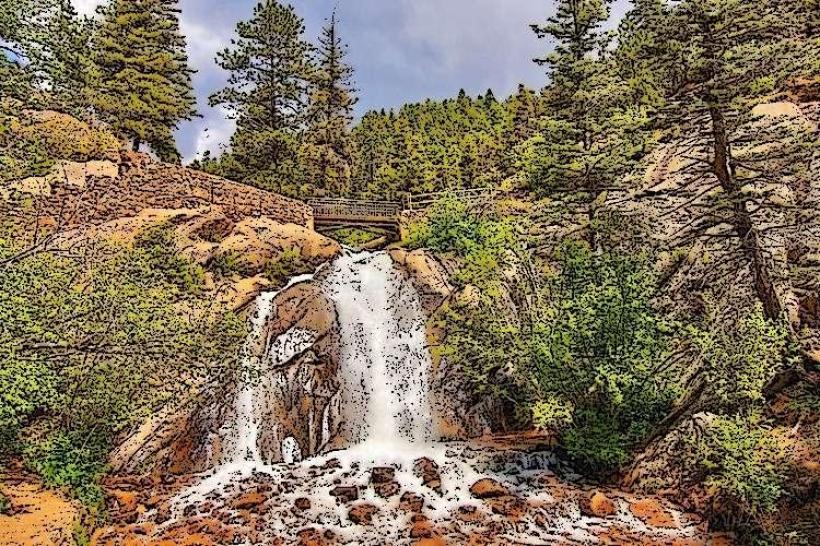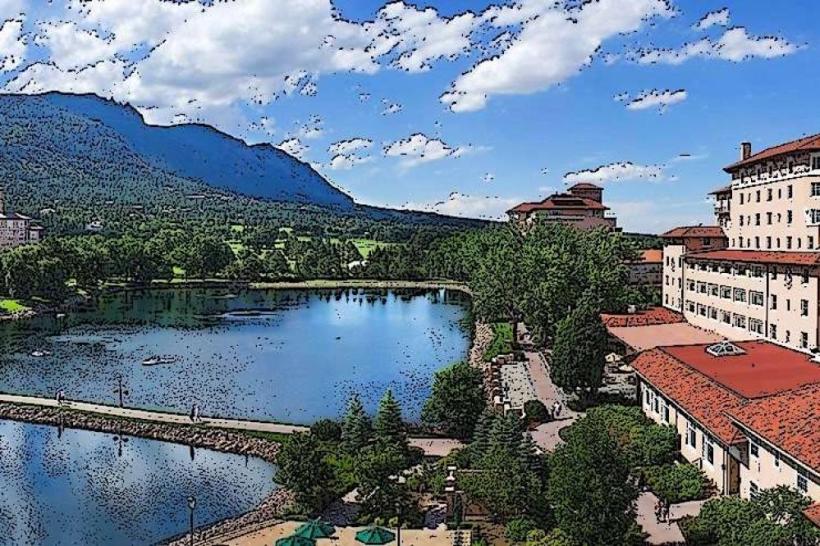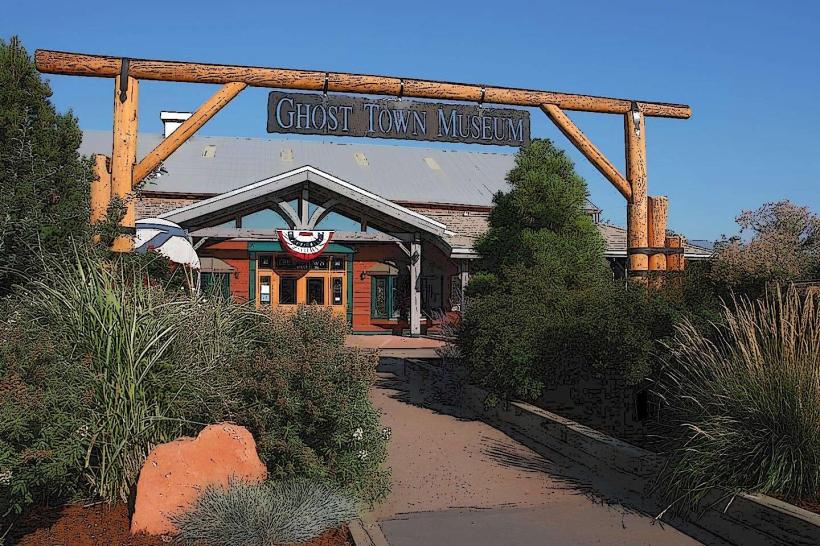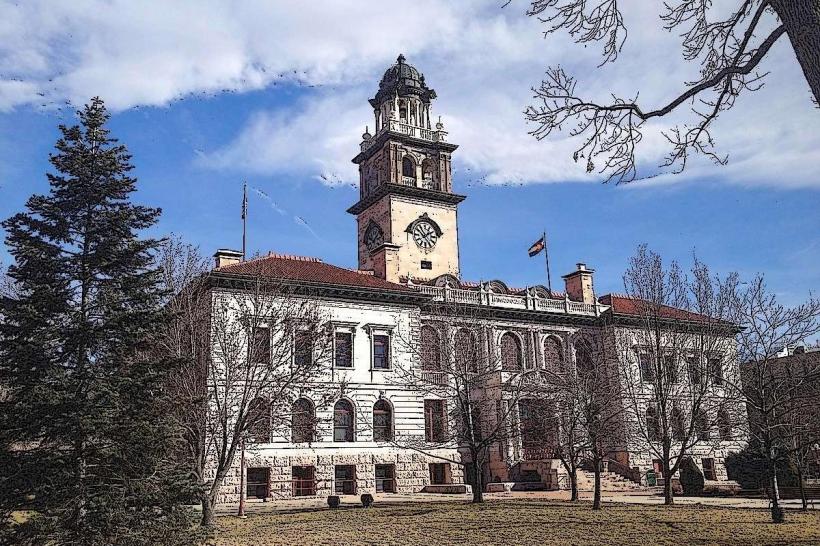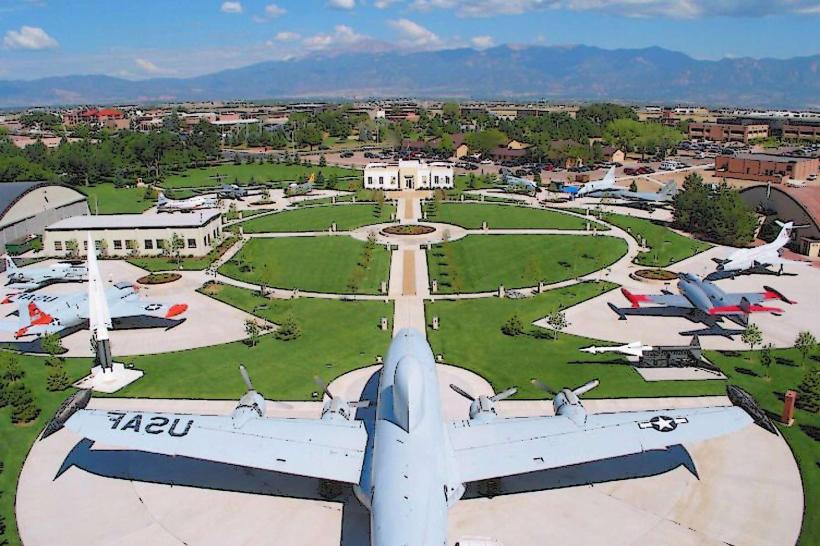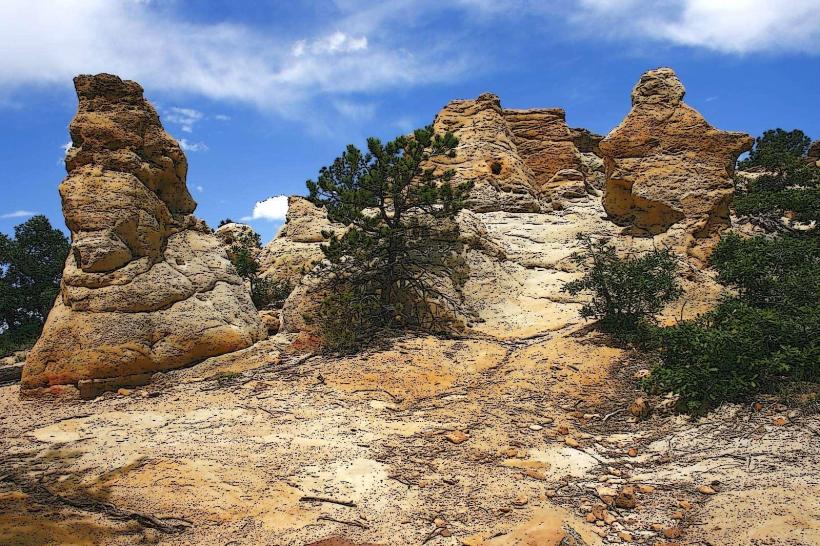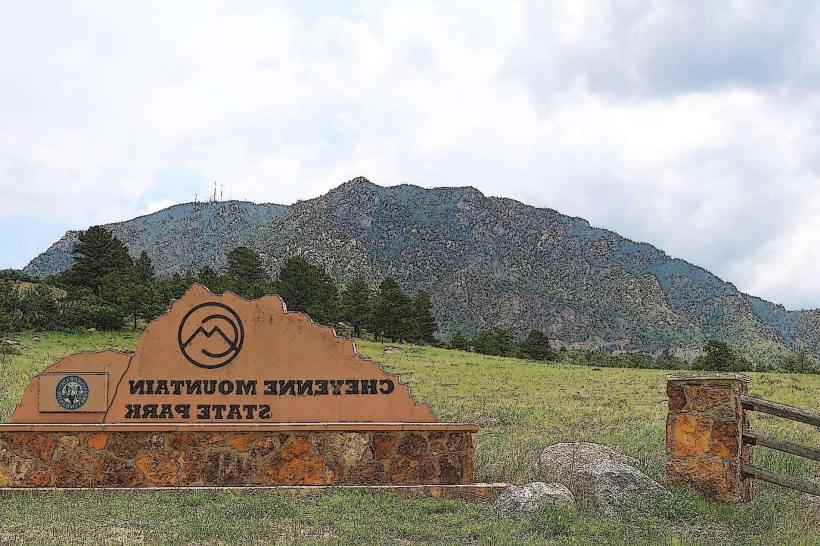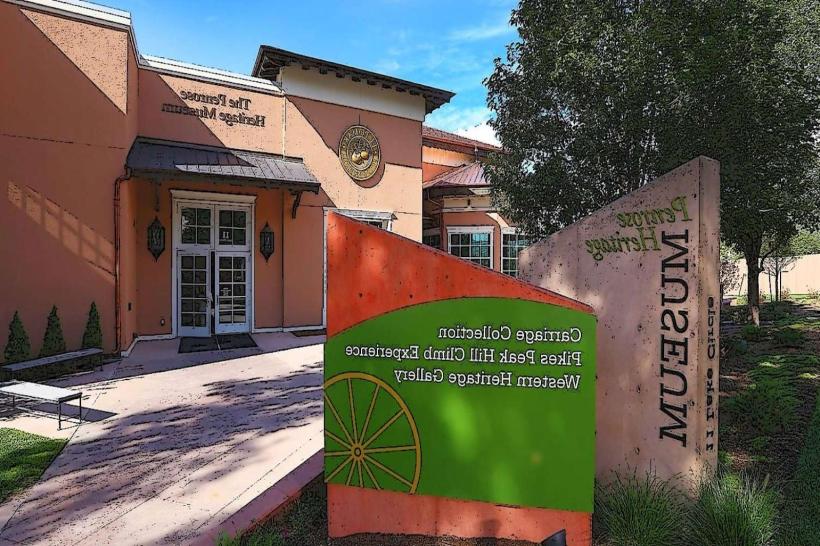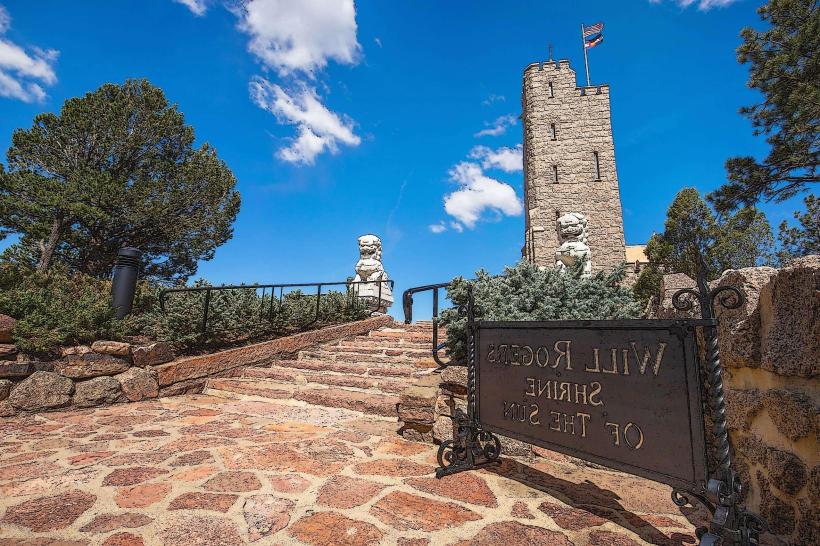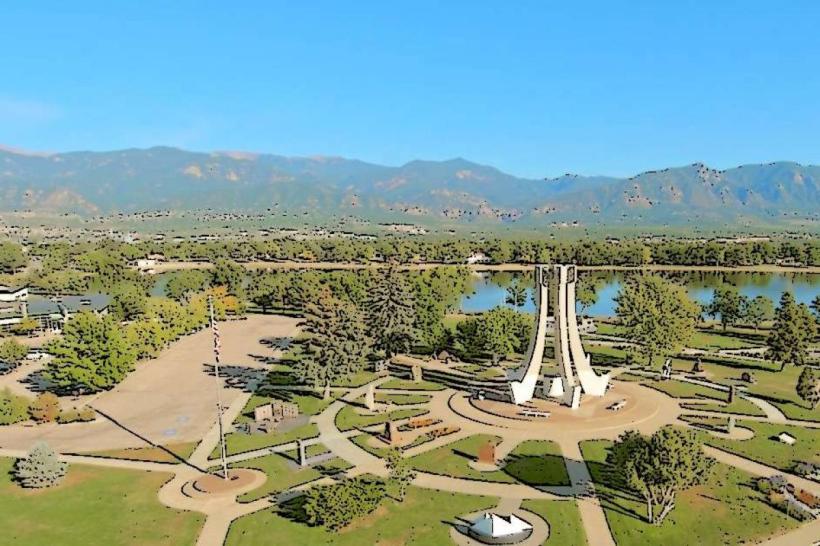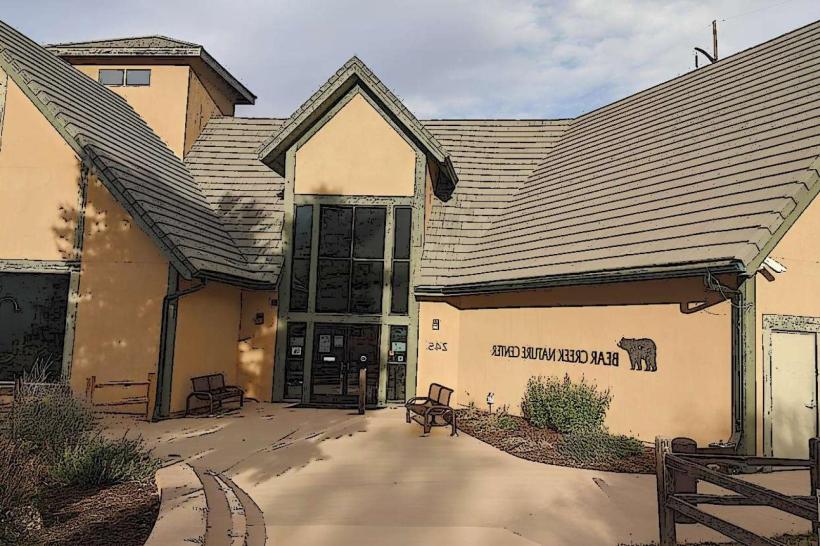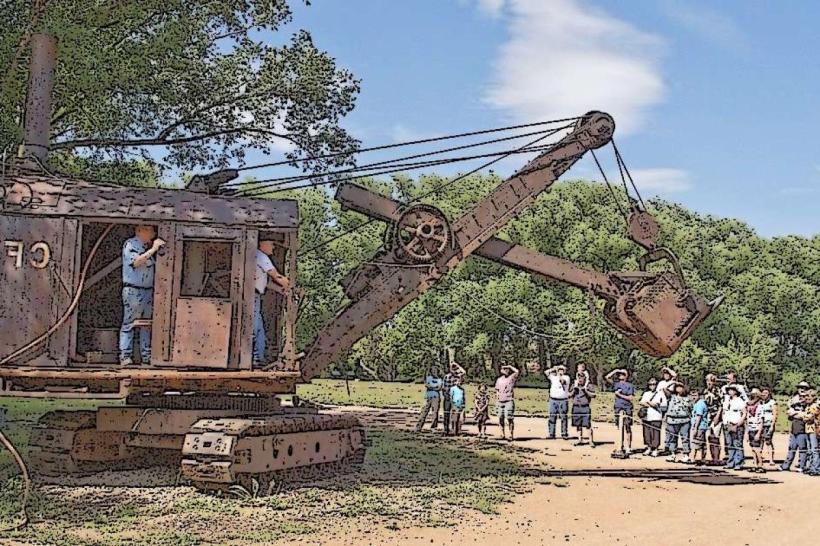Information
City: Colorado SpringsCountry: USA Colorado
Continent: North America
Colorado Springs, USA Colorado, North America
Colorado Springs is the second-largest city in Colorado, located about 70 miles south of Denver along the base of one of the state's most iconic peaks-Pikes Peak, which towers at 14,115 feet. The city blends natural beauty, military significance, outdoor recreation, and cultural charm. It is known for its clean air, scenic views, and slower pace compared to Denver, making it a magnet for both tourists and residents seeking access to the outdoors and a high quality of life.
GEOGRAPHY AND NATURAL LANDSCAPE
Colorado Springs lies at an elevation of approximately 6,035 feet, nestled at the foot of the Front Range of the Rocky Mountains. The city’s geography is dramatically defined by:
Pikes Peak: Known as "America’s Mountain," it inspired Katharine Lee Bates to write "America the Beautiful" after a visit in 1893. Accessible via Pikes Peak Highway, Barr Trail (a strenuous hike), or the Pikes Peak Cog Railway.
The Garden of the Gods: A public park and National Natural Landmark filled with towering red rock formations, balanced rocks, and sandstone fins. Popular for hiking, rock climbing, and photography.
Red Rock Canyon Open Space: Offers trails with striking red rock formations similar to Garden of the Gods but with fewer crowds.
Cheyenne Mountain: Home to scenic parks, Cheyenne Mountain Zoo, and the NORAD military complex deep within the mountain itself.
The city straddles the high desert edge of the plains but quickly transitions into rugged foothills, forested slopes, and alpine tundra.
CLIMATE
Colorado Springs experiences a semi-arid climate:
Summers are warm but not extreme, typically ranging from 80–90 °F.
Winters are relatively mild compared to mountain towns, with snowfall but many sunny days.
Afternoon thunderstorms are common in summer due to the elevation.
Like Denver, it enjoys around 300 days of sunshine per year.
HISTORY AND FOUNDING
Native American Tribes: Originally inhabited by the Ute, Cheyenne, and Arapaho tribes.
European Settlement: Founded in 1871 by General William Jackson Palmer, a Civil War hero and railroad magnate who envisioned a resort community.
The city was promoted as a health destination in the 19th century, thanks to its dry, clean air and scenic surroundings, attracting tuberculosis patients and retirees.
The Pikes Peak Gold Rush in the nearby mountains further contributed to the city's growth.
URBAN LAYOUT AND DISTRICTS
Colorado Springs is a sprawling city that mixes residential neighborhoods, natural spaces, and institutions:
Downtown Colorado Springs
Compact core with historic buildings, galleries, restaurants, craft breweries, and the U.S. Olympic & Paralympic Museum.
Ongoing revitalization efforts have brought in boutiques, coworking spaces, rooftop bars, and art installations.
Old Colorado City
Originally a separate town founded in 1859, now a historic district with 19th-century architecture, local artisan shops, and seasonal markets.
Known for its laid-back charm, eateries, and galleries.
Manitou Springs (just west of Colorado Springs)
A historic and artistic town known for natural mineral springs, quirky shops, and the Manitou Incline, a steep staircase trail with over 2,700 steps up a former railway bed.
Also home to Cave of the Winds and Miramount Castle.
Broadmoor Area
Upscale region anchored by the historic Broadmoor Hotel, one of the most luxurious resorts in the U.S.
Surrounded by golf courses, trails, Cheyenne Mountain Zoo, and Seven Falls.
MILITARY PRESENCE
Colorado Springs is one of the most significant military cities in the United States:
United States Air Force Academy: North of the city, with its iconic chapel, visitor center, and training grounds.
Fort Carson: A large Army installation south of the city.
Peterson Space Force Base: Headquarters for U.S. Space Command and part of the country’s aerospace defense infrastructure.
NORAD (North American Aerospace Defense Command): A secure facility buried deep within Cheyenne Mountain, responsible for aerospace warning and defense.
The military contributes to the local economy, technology development, and cultural diversity.
CULTURE, EDUCATION, AND EVENTS
While not as urbanized as Denver, Colorado Springs has a growing cultural presence:
Colorado College: A liberal arts institution near downtown with a beautiful campus and active arts scene.
University of Colorado Colorado Springs (UCCS): A major public university that continues to expand in science, engineering, and health.
Pikes Peak Center for the Performing Arts: Hosts concerts, Broadway shows, and symphony performances.
Museums:
U.S. Olympic & Paralympic Museum: An interactive and modern tribute to Team USA.
Colorado Springs Pioneers Museum: Local history housed in an old courthouse.
Money Museum: Operated by the American Numismatic Association, showcasing currency history.
Annual events include the Pikes Peak International Hill Climb, Balloon Classic, Territory Days, and the Colorado Springs Labor Day Lift Off-a hot air balloon festival.
OUTDOOR RECREATION
The city is a haven for outdoor enthusiasts:
Hiking: Trails range from easy walks in Garden of the Gods to the strenuous Barr Trail to Pikes Peak.
Cycling: Miles of bike paths and mountain biking areas in Red Rock Canyon and Cheyenne Cañon.
Climbing: Garden of the Gods, Shelf Road (nearby), and city park climbing zones.
Fishing, Horseback Riding, and Camping are popular in nearby wilderness areas.
ECONOMY
Colorado Springs’ economy is balanced between:
Military and Aerospace: A major employer and research presence.
Technology: Especially in cybersecurity, software, and aerospace industries.
Tourism and Hospitality: Fueled by its natural attractions and historic resorts.
Healthcare and Education: Supported by regional hospitals and expanding universities.
Its cost of living is lower than Denver's, but real estate has risen in recent years due to high demand.
TRANSPORTATION
No light rail or major subway system, but the city has a robust bus network and developing bike infrastructure.
Served by Colorado Springs Airport (COS), with national connections and a quieter alternative to Denver International.
I‑25 runs north-south through the city, connecting to Denver and Pueblo.
Scenic drives: Pikes Peak Highway, Gold Camp Road, and Highway 24 into the mountains.
DEMOGRAPHICS AND LIFESTYLE
Population: Over 490,000 in the city proper, over 750,000 in the metro area.
A younger population due to the military and universities.
Politically more conservative than Denver but increasingly diverse.
Lifestyle is centered around wellness, outdoor activities, and community events.
Residents are typically active, nature-oriented, and often connected to the military or technology sectors. The city maintains a more relaxed pace than Denver, with less urban congestion but just as much scenic splendor.
Colorado Springs is a city where rugged wilderness meets a structured, disciplined military presence and a growing cultural pulse. With its dramatic landscapes, patriotic heritage, and laid-back atmosphere, it serves as both an outdoor playground and a place of innovation and tradition.

